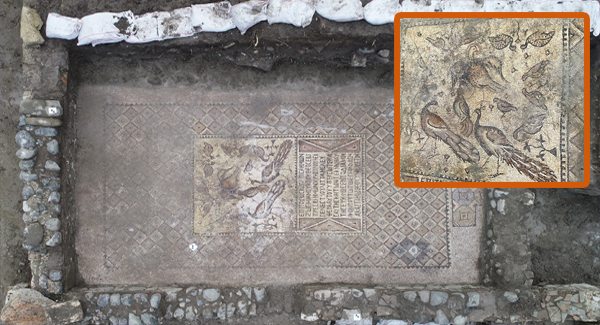The story of Noah’s Ark, a cornerstone of biblical tradition, has long been dismissed as myth. Yet, recent discoveries in Turkey’s Ararat Mountains are reigniting curiosity. Researchers claim 3D scans reveal a boat-shaped structure matching the Bible’s description, sparking debate between faith and skepticism. Here’s what we know about this ancient legend, the new findings, and their implications.
The Biblical Narrative
In Genesis, God, dismayed by humanity’s corruption, decides to flood the Earth, sparing only Noah, a righteous man, and his family. Noah is tasked with building a massive ark—300 cubits long, 50 cubits wide, and 30 cubits high (roughly 450x75x45 feet, assuming a cubit is 18 inches)—to house his family, representatives of every animal, and provisions. After 40 days of rain and 150 days of flooding, the ark rests on the “Mountains of Ararat.” Noah’s family emerges to repopulate a reset world. This tale of judgment, survival, and salvation resonates across cultures, with over 250 global flood narratives sharing similar themes.
The Durupinar Site: A Geological Anomaly or the Ark?
In the 1950s, a cartographer spotted a boat-shaped formation near Doğubeyazıt, Turkey, in the Ararat region, now called the Durupinar site. Measuring roughly 450 feet long, it aligns with the biblical ark’s dimensions. The Noah’s Ark Discovered Project recently used ground-penetrating radar to produce 3D images, claiming they reveal a man-made vessel beneath the surface. These findings have thrilled believers, but the scientific community remains skeptical, citing natural geological processes as a likely explanation.
A History of Controversy
The Durupinar site has been debated for decades:
- 1970s–1980s: American researcher Ron Wyatt championed the site as the ark’s remains, gaining a following but facing scientific criticism.
- 1996: Geologist Lawrence Collins argued the formation was a natural rock structure, undermining Wyatt’s claims.
- Ongoing Research: Turkish and international teams continue investigations, with some supporting a man-made origin and others favoring a geological one.
Turkish authorities designated the site a national park to protect it, limiting excavations but not curiosity. The debate部分
Supporting Evidence for a Historical Flood
Several findings fuel speculation about a real flood event:
- Possible Ark Remains: In the 1990s, David Allen Deal claimed to find ark remnants near Mount Ararat, matching biblical dimensions.
- Sumerian King List: Ancient texts record pre-flood kings with long lifespans, which drop post-flood, suggesting a major event.
- Dead Sea Scrolls: These 1940s finds detail the ark and flood, adding historical weight.
- Underwater Cities: Submerged cities worldwide, dated to the flood’s supposed era, hint at widespread flooding.
- Chevrons: Flood markers found high above sea level, like in Madagascar, suggest massive ancient floods.
- Shifting Views: Mainstream researchers are increasingly open to a historical basis for flood stories.
Challenges and Skepticism
Skeptics argue the ark, likely made of perishable wood (possibly cypress or cedar), would have decomposed over 7,000 years or been repurposed post-flood. The Durupinar site’s shape could result from natural erosion rather than human construction. Biblical texts, subject to millennia of oral tradition and translation, complicate literal interpretations. Coconut palm, proposed as “gopher wood,” is unlikely due to its absence in the ancient Near East.
Symbolic and Theological Significance
The ark’s single door, sealed by God, symbolizes salvation through faith, paralleling Jesus as the path to redemption. Noah’s 70-year effort to build the ark, despite mockery, mirrors warnings ignored before judgment, like Jerusalem’s fall to Rome. The ark’s pitch (linked to “atonement” in Hebrew) and coffin-like design evoke baptism—dying to sin and rising anew. For believers, the story underscores grace, divine provision, and eternal security in Christ.
Why It Matters
The Noah’s Ark saga endures because it taps into universal themes: survival, divine justice, and renewal. Whether myth or history, it reflects humanity’s fear of natural disasters, especially floods, common in river-based civilizations like those along the Nile or Tigris-Euphrates. The search for the ark—on rugged peaks or in ancient texts—yields insights into human history, faith, and our quest to bridge belief and evidence. Even if physical proof remains elusive, the story’s cultural and spiritual resonance keeps it alive.
What’s Next?
Finding an intact ark is unlikely, but discoveries like the Durupinar site or submerged cities could reshape our understanding of ancient cataclysms. The debate pits faith against science, yet both sides drive inquiry. For some, the ark’s true power lies not in artifacts but in its call to heed warnings and seek salvation before it’s too late.
What do you think—geological quirk or biblical relic? Share your thoughts below and join the quest to unravel this ancient mystery!
























